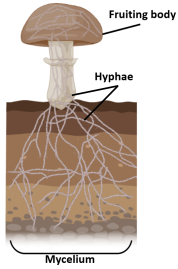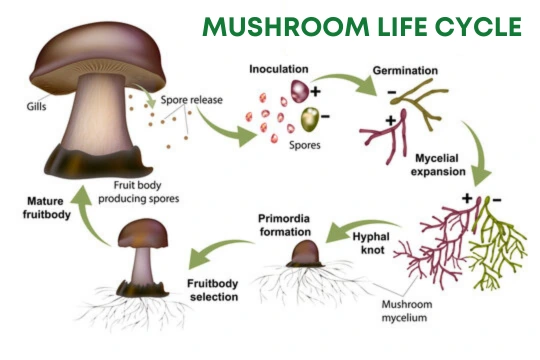Mycelium, the humble yet mighty foundation of mushrooms, has stepped into the spotlight in 2023, dazzling the world as an environmental and nutritional titan, not to mention, a sustainable leather alternative. Now, a groundbreaking study probes deeper into its prowess, asking a critical question: could mycelium be our secret weapon against global hunger and food insecurity?

A Mushrooming Solution for Nutritional Needs
The realm of mycelium has seen a surge of interest in recent years. As we step into 2024, this trend only intensifies, propelled by the ingredient’s remarkable environmental, scalability, and health credentials. The US mycelium frontrunner, Meati Foods, brought to light the fungi’s nutritional benefits through an AI-led study.
Building upon this, a new study published in the Journal of Agricultural and Food Chemistry, involving Harold H. Schmitz, Chair of the Scientific Board for Meati, and other Meati-affiliated researchers, delves into mycelium’s potential as a substitute for animal-derived meat and a solution to world hunger and malnutrition, while endorsing regenerative agriculture.

The Flavor Potential of Mycelium
While mycelium-based foods are often perceived as bland or subtly mushroom-like, they hold immense potential for culinary innovation. Most commercial products are seasoned to taste more like the meats they replace, hinting at a vast array of undiscovered flavors. The study explains, “Many fungi contain the flavor chemistry potential to generate a wide variety of flavors both endogenously and through thermal treatment.”
This discovery paves the way for developing unique taste profiles, from meaty bouillons to sweet and savory notes, all through the natural chemistry of different mushroom species.

The Health and Climate Advantages of Mycelium
Touted for its health benefits, mycelium is low in fat and high in fiber, boasting 20-30% protein content in dry matter. This wonder organism offers essential amino acids and micronutrients often found in animal foods, such as iron, zinc, and vitamin B12. Significantly, the study cites, “Mycelium lowers cholesterol in individuals with elevated levels – a three-week study revealed that 190g of mycelium per day lowered LDL cholesterol by 21% on average versus animal protein.”
Mycelium also shines in its environmental impact. Its carbon footprint is substantially lower than that of traditional meat sources, making it a champion of sustainability. The study notes, “The carbon footprint of mycofoods is four and 10 times lower than chicken and beef, respectively.”

Tackling Global Hunger with Mycelium
The connection between global hunger, food insecurity, and lack of access to nutritious food is well-established. Mycelium’s rapid growth and lower production costs make it an attractive alternative protein source. But to fully harness its potential, investments in technology and infrastructure are crucial.
The study asserts the need for “further investment in resources and infrastructure in this space to help find ways to cut production costs and educate consumers on the use of this ingredient as a dietary staple.”
More To Discover
Envisioning a Mycelium-Infused Future
As we look to the future, mycelium promises to adapt to various cultural practices and culinary preferences. It could become a staple in diets worldwide, offering a solution that’s not just sustainable, but also culturally sensitive and nutritionally rich. The study concludes, “Once achieved, mycelium will certainly be appealing as an environmentally friendly, nutrient-dense protein source that can aid in the reduction of global hunger.”
Key Takeaways:
- Mycelium is poised as a sustainable and nutritious solution for global hunger.
- Its potential for diverse flavor profiles offers exciting culinary possibilities.
- Mycelium’s health benefits and lower environmental impact make it an attractive alternative to animal protein.
- Investment in technology and infrastructure is key to making mycelium a viable global food source.
- The future of mycelium includes cultural adaptation and widespread dietary integration.




















